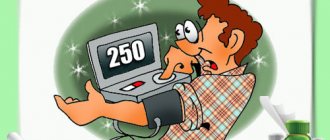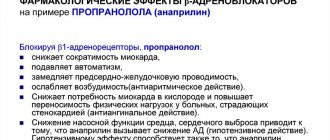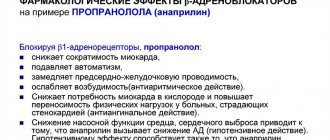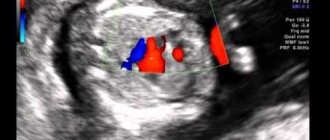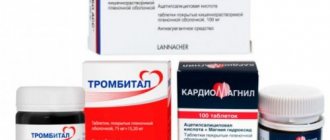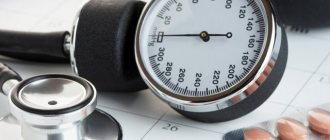Tachycardia is one of the most common heart rhythm disorders. The main mechanism for the development of pathology is to increase the automaticity of the sinus node. In this case, the heart rate increases to more than 90 beats per minute. Tachycardia may not have subjective manifestations. Most often it is felt as increased heartbeat. In the presence of pathologies of the cardiovascular system, this type of arrhythmia can worsen the general condition and provoke the development of complications. Therefore, treatment of tachycardia should be prescribed and strictly monitored by a specialist.
Bradycardia
Bradycardia is a type of cardiac arrhythmia characterized by a slowing of the heart rate to 55 beats per minute or lower. It is the norm for athletes who systematically experience significant physical activity. In this case, we talk about physiological (functional) bradycardia. However, more often it is pathological in nature and serves as a symptom of heart disease. This condition is based on the inability of the sinus node to produce electrical impulses more than 60 times per minute, or to distribute them correctly along the conduction pathways.
Physiological indicators of heart rate in people of different ages
Before looking for an answer to the question: “How to lower a high heart rate?”, You need to make sure that you really have a problem with this. Physiological parameters of the heartbeat can vary over a significant range. They are individual for each person.
Note.
The heart rate of the fairer sex is slightly higher than that of men. Small deviations from the norm may be observed, but they must be due to the individual characteristics of the body.
Types of bradycardia and causes of its occurrence
According to its localization, pathological bradycardia of the heart can be:
- sinus. Appears due to a malfunction of the sinus node;
- caused by heart block. In this case, the sinus-atrial or atrioventricular conduction of impulses is disrupted.
Sinus bradycardia, depending on the causes that provoked it, is divided into the following forms:
- Organic. Appears as a result of any cardiac pathology: dystrophy or myocardial infarction, cardiosclerosis, myocarditis.
- Neurogenic (not associated with heart disease). This form can be caused by many factors: increased intracranial pressure, brain tumors and brain hemorrhages, various neuroses, vegetative-vascular dystonia, head bruises, wearing an excessively tightly tied tie or tight collar. Bradycardia is typical for patients with reduced thyroid function. Its cause may be a stomach or duodenal ulcer.
- Medicinal. This form is caused by taking certain medications, in particular, cardiac glycosides, morphine, β-blockers, calcium channel blockers, etc.
- Toxic. Develops with severe intoxication due to sepsis, typhoid fever, uremia, hepatitis. Toxic bradycardia is caused by poisoning with phosphorus compounds.
Sometimes the cause of the slow heart rate cannot be determined. This form is called idiopathic.
Cardiac bradycardia in a child or adolescent is usually caused by the same causes as in an adult. Such children require systematic monitoring by a cardiologist.
Women sometimes develop sinus bradycardia during pregnancy. This is a temporary condition that is not considered a pathology and goes away on its own after childbirth.
Which drug for arrhythmia is better?
As part of drug therapy, the doctor selects primary and auxiliary drugs. The most popular groups are considered in our rating. The assessment criteria and recommendations of Vyborexperta.ru will simplify the choice of how to treat such a pathology:
- Propanorm is a sodium channel blocker with local anesthetic action for the prevention of attacks;
- Metoprolol is a selective beta1-blocker with good bioavailability and prolonged effect;
- Cordarone – 2 in 1 remedy against atrial fibrillation, calcium/sodium/potassium blocker + beta-adrenergic blocking agent;
- Aspirin is the best prevention of blood clots, stroke, heart attack, anti-inflammatory, antipyretic properties;
- Panangin is an electrolyte with an antiarrhythmic effect, a source of magnesium and potassium, prevention for the elderly.
Two patients with a similar clinical picture may benefit from different treatment regimens. Therefore, self-medication, which increases the risk of worsening the situation to a critical condition, is strictly prohibited. Our rating is designed to help narrow your search for reliable, proven drug names.
Clinical picture
Mild bradycardia (45–55 beats per minute), which does not cause significant disturbances in the body, is usually not accompanied by clinical manifestations. Symptoms such as dizziness, weakness and fainting occur when the heart rate drops to 40 beats per minute.
In addition, when the heart rate slows down, you may experience:
- chronic fatigue;
- dyspnea;
- cold sweat;
- chest pain;
- blood pressure surges;
- problems with attention, thinking and memory;
- flashing “flies” before the eyes.
In severe cases, fainting and episodes of loss of consciousness are possible. The severity of bradycardia symptoms depends on the degree of circulatory disorder developing against its background.
Increased heart rate and high blood pressure
Increased heart rate is often accompanied by increased blood pressure. In this case, the more often the heart contracts, the higher the pressure in the arteries. The dependence here is exactly that... Therefore, it is wrong to consider high blood pressure as the cause of increased heart rate. Another thing is that increased blood pressure, accompanied by a general deterioration in well-being, can make you notice how hard your heart is beating.
Rapid heartbeat and increased blood pressure can be caused by the same reasons. In this case, therapeutic measures aimed at normalizing blood pressure will also help normalize the heartbeat.
Diagnostics
The main symptom of the pathology in question is a rare pulse. With sinus bradycardia, heart contractions have a regular rhythm. The sonority of heart sounds remains unchanged. Some patients experience irregular breathing.
To clarify the diagnosis, the doctor prescribes additional tests:
- ECG;
- ultrasound sonography of the heart;
- bicycle ergometry with load;
- transesophageal electrophysiological study of cardiac conduction tracts.
The latter method allows you to differentiate the functional and organic forms of heart rhythm disturbances.
Treatment of bradycardia
Physiological and mild types of pathology that do not cause much discomfort to the patient do not require therapy. If the decrease in heart rate is caused by medications, then dose adjustments or drug replacement are carried out. All other forms are eliminated with medication. The basis of treatment should be to eliminate the problem that caused the slow heart rate.
Symptoms associated with cerebral hypoxia are relieved by products containing belladonna (Bellaspon, Bellataminal, Besalol, Zelenin Drops), Eleutherococcus extract, ginseng root, and caffeine.
Drugs that can increase heart rate include:
- "Atropine sulfate";
- "Izadrin";
- "Normosecretol";
- "Orciprenaline sulfate";
- "Ephedrine hydrochloride."
Injection solutions and tablets for bradycardia are selected by the doctor, taking into account the clinical picture, contraindications, the patient’s age and concomitant diseases.
Rating of drugs for arrhythmia
When selecting appropriate medications, VyborExpert relied on the recommendations of leading cardiologists, after which effective and time-tested drugs were assessed for the following characteristics:
- Form of the disease;
- Presence of concomitant disorders;
- Patient's age;
- Composition of the drug;
- Mechanism of action;
- Presence of additional risk factors;
- Release form, ease of use;
- Contraindications, risks of side effects;
- Safety, bioavailability;
- Course duration, price.
The result of the comparative analysis was a list of drugs for arrhythmia consisting of 9 nominees. For convenience, they were divided into 5 groups according to the principle of action. These are both preventive and therapeutic agents. Thanks to customer reviews, it was possible to determine the strengths and weaknesses of each.
Complications
Moderate or mild cardiac bradycardia may not cause hemodynamic disturbances. However, a significant decrease in heart rate (up to 40 beats or less) leads to insufficient blood flow to vital organs and their oxygen starvation. As a result, serious damage to the brain, kidneys, liver, intestines, lungs and disruption of their normal functioning can occur.
The brain suffers the most from impaired contractile function of the heart muscle (myocardium) and insufficient blood supply. Its hypoxia causes convulsions or episodes of loss of consciousness lasting up to a minute. This is the most serious complication, since breathing may stop during an attack. In case of frequent loss of consciousness with a sharp drop in blood pressure, the issue of implanting a pacemaker is decided - a device that artificially generates electrical impulses with the required frequency.
Increased heart rate and low blood pressure
An increased heart rate is quite possible even with low blood pressure. A sharp decrease in blood pressure can be observed during shock conditions (anaphylactic, traumatic, infectious-toxic, psychogenic and other types of shock). The body responds by speeding up the contraction of the heart muscle to restore blood pressure. A similar compensatory nature of increased heartbeat also occurs with large blood loss.
Frequently asked questions about bradycardia
What medications can be taken for bradycardia?
If you begin to notice a slowing of your heartbeat, then rush to see a doctor to determine the cause. Medicines are prescribed depending on the origin and type of pathology. Do not try to stop a sudden attack of acute bradycardia on your own. Better call an ambulance.
What causes bradycardia?
There may be several reasons for a decrease in heart rate. The leading place among them is occupied by organic heart lesions. Disorders of the nervous system, diseases of the thyroid gland and stomach, and the use of certain drugs can also provoke a slowdown in heart rate. Sometimes bradycardia is accompanied by severe poisoning.
What to take if your heart rate is low?
For mild sinus bradycardia, it is enough to drink “Zelenin Drops” 2-3 times a day, 20-30 drops with water. If bradycardia is accompanied by painful symptoms and does not go away, then you cannot do without medical help.
Blood thinners
Antithrombotic drugs are used for various cardiac diseases to prevent blood clots, heart attack or stroke.
For palpitations, they are prescribed if atrial fibrillation (atrial fibrillation) is diagnosed. In this case, chaotic contractions of the atria create conditions for the “churning” of blood clots inside them, which can enter the arterial bed and clog a large vessel feeding an organ. Antithrombotic drugs do not have the property of slowing heart rate.
For atrial fibrillation, the following medications are prescribed to prevent severe complications:
- warfarin;
- a combination of acetylsalicylic acid and clopidogrel (in extremely rare cases, if it is impossible to use other means);
- dabigatran etexilate (Pradaxa);
- apixaban (Eliquis);
- rivaroxaban (Xarelto).
These medications are not prescribed to all patients. There are strict conditions for their use, so independent use of such drugs is unacceptable.
We recommend reading about arrhythmia and bradycardia at the same time. You will learn about the types and causes of arrhythmia against the background of bradycardia, signs of arrhythmia and bradycardia, as well as treatment for bradycardia with arrhythmia.
And here is more information about Anaprilin for arrhythmia.
Anti-palpitation pills are selected by a cardiologist individually for each patient. Despite the variety of relevant medications, a limited number of medications are used to treat each type of arrhythmia. Treatment for palpitations should be carried out under the control of daily ECG monitoring, and self-administration of such drugs is unacceptable.




